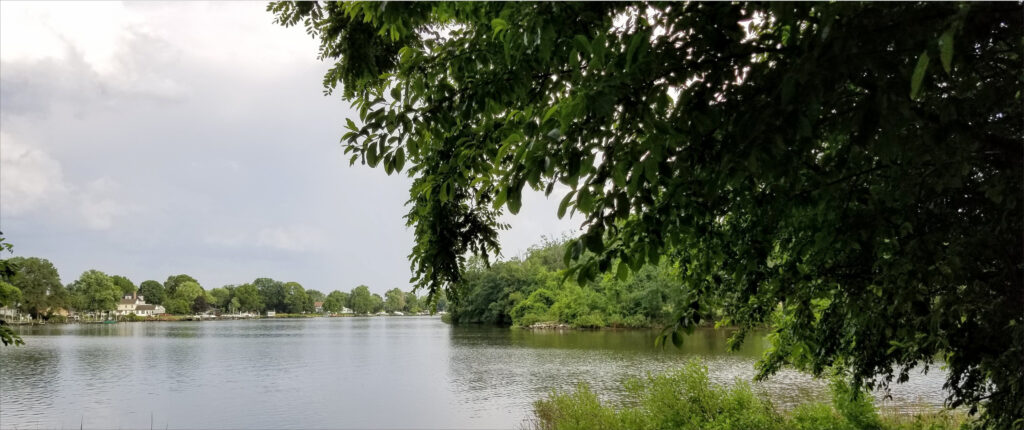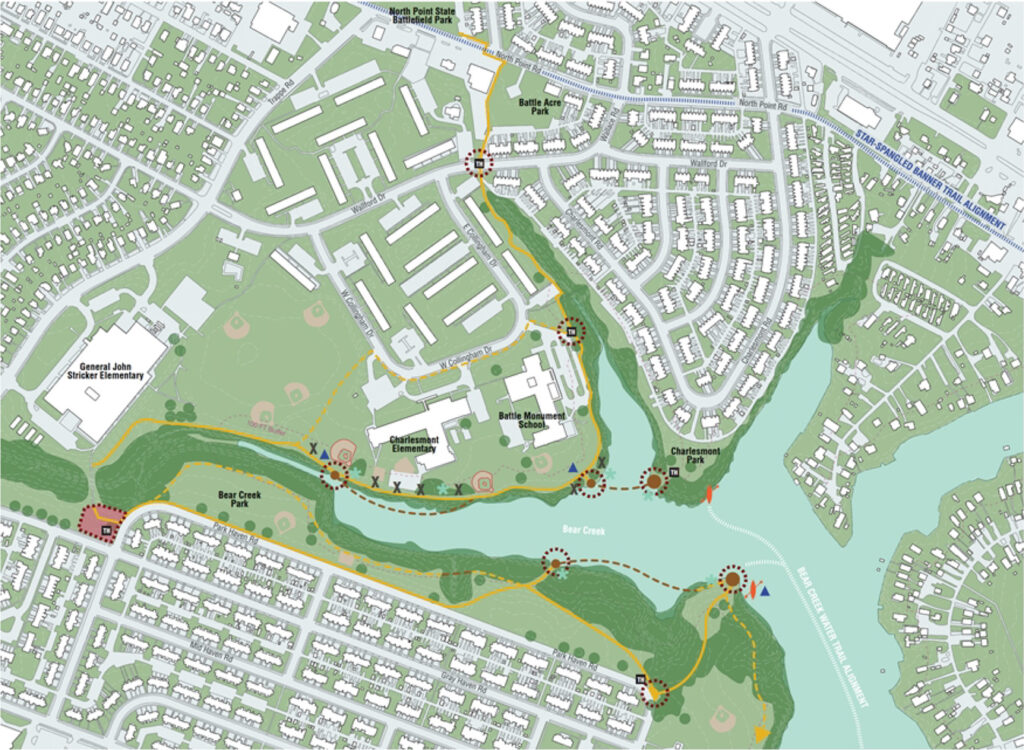
Bear Creek Heritage Trail
The battle of North Point took place on September 12, 1814. It marked a turning point in the British-American conflict, the War of 1812. North Point State Battlefield and Battle Acre Park, both located along busy North Point Road in Dundalk, commemorate the American stand against the British forces leading up to the Battle of Baltimore.
Today, there is little to indicate the significance of Bear Creek, its early residents, and how the natural features of the area shaped military strategy in 1814. Community members have advocated for decades for the creation of a trail to introduce residents and visitors to the nationally significant history of the area. Such a trail was included as a spur of the Star-Spangled Banner National Historic Trail in the Comprehensive Management Plan published by the National Park Service in 2012. The bicentennial celebrations in 2012 brought renewed attention to the idea and community members rallied to bring together a coalition of residents, community groups, government partners and nonprofit organizations – including NeighborSpace – to work on making the vision a reality.
In 2016, NeighborSpace secured an easement on the only tract of private land along the trail to be able to move the project forward. Since then, a Concept Design and a Phasing Plan were drafted, and NeighborSpace and its partners have worked steadily on the design and construction of the trail.
Bear Creek Heritage Trail Concept Plan
The Bear Creek Heritage Trail Concept Design provides a vision for the future development of the Bear Creek Heritage Trail. The vision, or design statement, reinforces the mission of NeighborSpace and project partners to provide adequate access to open and green spaces in the Dundalk community.

In August 2021, NeighborSpace received a Battlefield Preservation Planning Grant from the National Park Service (NPS) to benefit the trail project. The grant supports original historical research regarding the role of Bear Creek during the battle along Patapsco Neck during Baltimore’s defense in 1814.
What follows are some of the key findings we learned as a result of our research. The exhibit is less a story of the battle than it is the story of Patapsco Neck and its people before and during the battle. The exhibit concludes with examples of battle remembrances on Patapsco Neck today as well as recommendations for the future.